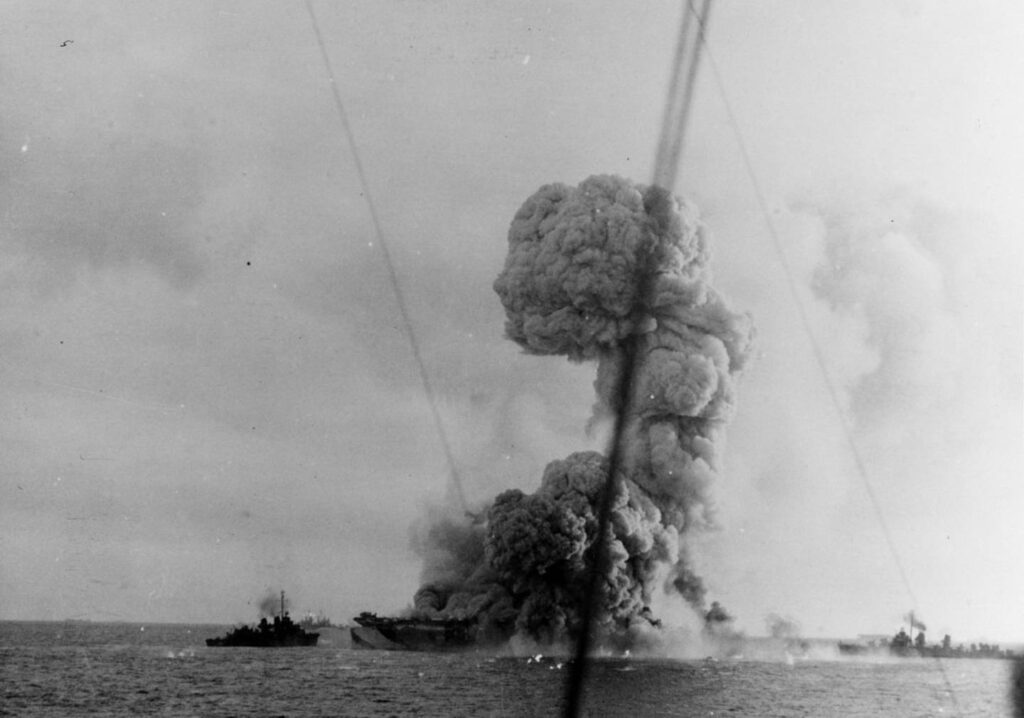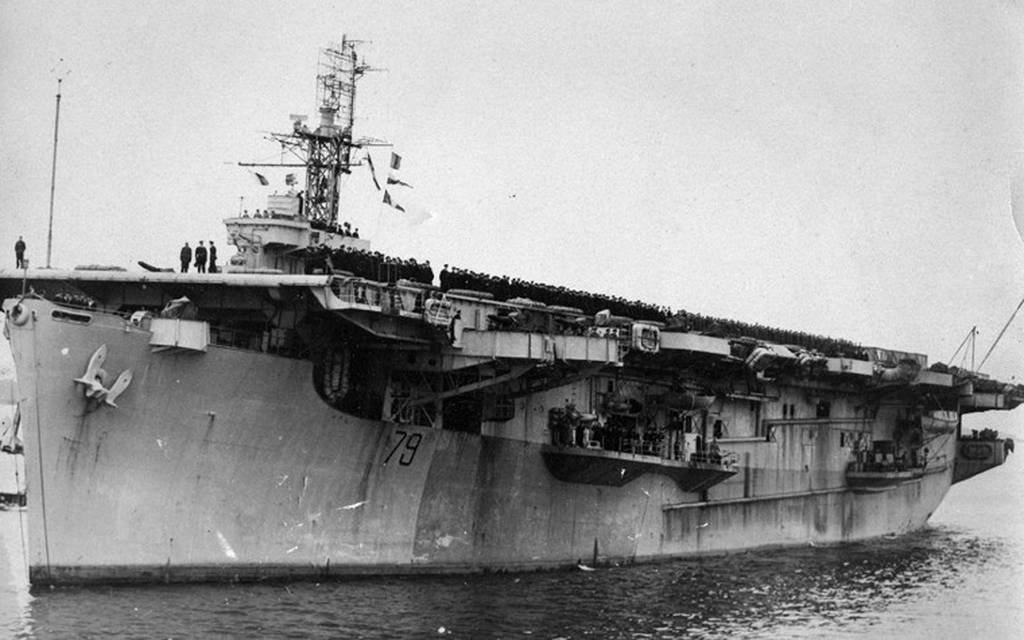The wreck website of a World Battle II U.S. Navy escort supplier was acknowledged Monday by the Naval Historic previous and Heritage Command's underwater archeology division, providing a semblance of closure for the crew of a ship that sank beneath the waves 78 years previously.
The USS Ommaney Bay (CVE 79) was transiting the Sulu Sea near the Philippines on the evening of January 4, 1945, when it was attacked by a twin-engine airplane pushed by a Japanese kamikaze pilot.
The ship's captain, Captain Howard L. Youthful, had merely decided to place in additional guards on deck as an extra precaution in direction of such assaults – nevertheless the attempt proved futile.
The incoming airplane, which no sailors seen until it was too late, crashed into the starboard aspect of the Casablanca-class escort supplier, detonating the two bombs hooked as much as it and setting off a conflagration on the ship's flight deck, the place there have been fairly a number of Airplane that had not however been degassed there have been assembled.
“The second bomb exploded near the starboard aspect after breaching the fireplace line on the second deck and passing by the hangar deck,” the NHHC assertion said.

Completely different ships rushed to sail alongside the Large O to help with the fires, nevertheless have been quickly pushed once more by the scorching heat. As a result of the gasoline- and bomb-fueled inferno unfold, a superb worse downside arose: the ship's torpedo warheads would possibly explode.
At 5:45 p.m., 45 minutes after the airplane entered the supplier, Admiral Jesse B. Oldendorft, the best officer aboard the neighboring Fletcher-class destroyer USS Burns, issued the order to abandon ship.
Joe Cooper, a sailor aboard the Ommaney Bay, recalled desperately prepared throughout the water for rescue after abandoning the ship.
“There have been sharks. “It regarded like males have been climbing on each other's shoulders to get out of the water,” Cooper suggested the Veterans Historic previous Museum of the Carolinas. “I bear in mind on Guadalcanal as soon as we seen the periscope of a submarine. We fired a torpedo. I walked once more there and seen oil slicks. It was a cargo ship and it was sunk. It was our first submarine. I had seen males dragged underwater by sharks and eaten in Guadalcanal. After Guadalcanal, they suggested us, “For many who ever go into the water, don’t step because of the sharks will chase you.”
“I stayed nonetheless throughout the water and a few sharks merely walked earlier me. No ships bought right here to assist us because of the sunshine airplane supplier Princeton had been damaged whereas passing the Birmingham throughout the bombardment, they usually additionally stayed away from us. In order that they permit us to burn.”
At spherical 8 p.m., the USS Burns fired a single torpedo on the unsalvageable escort supplier, sending the hulking, effervescent ship utterly underwater. Of her 800-man crew, 95 have been misplaced.
A crew working with NHHC personnel positioned the vessel on Monday using “a mix of survey information from the Sea Scan Survey workforce and video footage from the DPT Scuba Dive workforce,” the discharge said. “This information was correlated with location data for the wreck website” collected in 2019.
“Ommaney Bay is the final word resting place of American sailors who made the final phrase sacrifice in safety of their nation,” retired Admiral and NHHC Director Samuel J. Cox said in a data launch saying the location of the wreck. “This discovery permits some peace for the households of those who died and affords us all one different chance to remember and honor their service to our nation.”
